Plato’s cave: vacuum test for exoplanet detection
Wednesday, 01 June 2022 04:40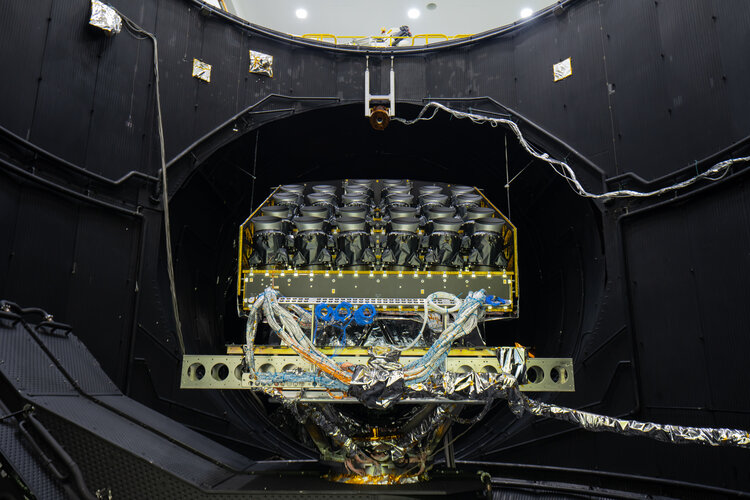 Image:
Plato’s cave: vacuum test for exoplanet detection
Image:
Plato’s cave: vacuum test for exoplanet detection Astrocast buying Hiber to boost funding and expansion plans
Tuesday, 31 May 2022 16:57
Cash-strapped smallsat operator Astrocast announced plans May 30 to buy Dutch connectivity solutions provider Hiber, which scrapped plans for its own constellation last year following failures on its initial satellites.
The post Astrocast buying Hiber to boost funding and expansion plans appeared first on SpaceNews.
Sierra Space to partner with Spirit AeroSystems on Dream Chaser cargo modules
Tuesday, 31 May 2022 15:00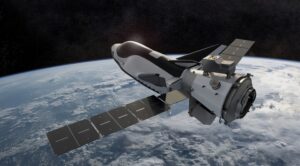
Sierra Space announced May 31 a strategic partnership with aerospace manufacturer Spirit AeroSystems for production of cargo modules for its Dream Chaser vehicles.
The post Sierra Space to partner with Spirit AeroSystems on Dream Chaser cargo modules appeared first on SpaceNews.
Rocket to launch China’s next space station module arrives at launch center
Tuesday, 31 May 2022 12:42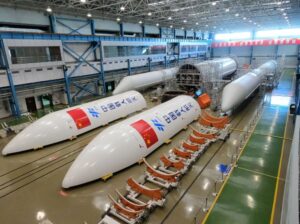
A Long March 5B rocket has arrived at Wenchang spaceport as China gears up to send its second space station module into orbit.
Against Quad? China launches satellite-based Earth observation initiative with BRICS nations
Tuesday, 31 May 2022 12:22
In what appears to be a tit-for-tat move against Quad nations’ launch of a satellite-based maritime domain awareness initiative for the Indo-Pacific region, China has rolled out a similar campaign with its four BRICS partners.
The post Against Quad? China launches satellite-based Earth observation initiative with BRICS nations appeared first on SpaceNews.
A new kind of solar sail could let us explore difficult places to reach in the solar system
Tuesday, 31 May 2022 12:10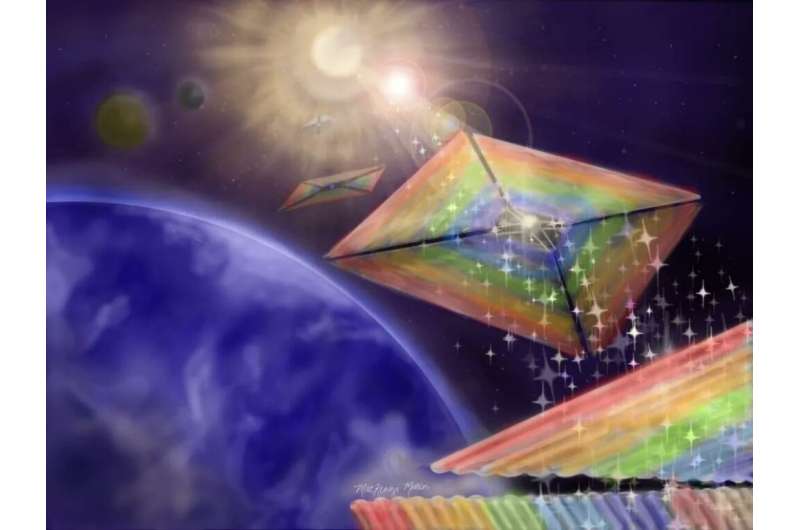
Solar sailing technology has been a dream of many for decades. The simple elegance of sailing on the light waves of the sun does have a dreamy aspect to it that has captured the imagination of engineers as well as writers. However, the practicalities of the amount of energy received compared to that needed to move useful payloads have brought those dreams back to reality. Now, a team led by Amber Dubill of John Hopkins University Applied Physics Laboratory and supported by the NASA Innovative Advanced Concepts (NIAC) program is developing new solar sail architecture that might have already found its killer app—heliophysics.
The technique they are using is known as diffractive light sailing. It has significant advantages over existing solar sail technology, including the ability to turn. That is a big problem for most solar sails, which lose effectiveness if they are not directly facing the sun.
Media invitation: new details about our Milky Way in the third Gaia data release
Tuesday, 31 May 2022 12:00
Media representatives are invited to join a virtual press event at 13 June 2022 from 10:00 to 11:00 CEST, to learn more about the new data set to be released by ESA’s Gaia mission.
House committee questions proposed delay in NASA asteroid mission
Tuesday, 31 May 2022 10:27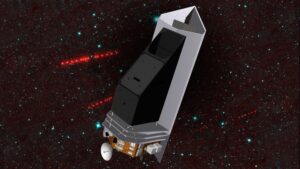
Members of the House Science Committee used a hearing about the planetary science decadal survey to criticize a proposal in NASA’s budget request to delay work on a space telescope to track near Earth objects.
The post House committee questions proposed delay in NASA asteroid mission appeared first on SpaceNews.
Astrocast acquires Hiber, accelerates OEM strategy.
Tuesday, 31 May 2022 09:34 Astrocast, a leading global nanosatellite IoT network operator, has announced the signature of an agreement to acquire Hiber, a Netherlands-based, IoT-as-a-Service provider. Under the agreement, Astrocast agreed to acquire all of Hiber's shares in exchange for the issuance of new Astrocast shares, representing 16.5% of Astrocast's share capital, calculated prior to its previously announced publi
Astrocast, a leading global nanosatellite IoT network operator, has announced the signature of an agreement to acquire Hiber, a Netherlands-based, IoT-as-a-Service provider. Under the agreement, Astrocast agreed to acquire all of Hiber's shares in exchange for the issuance of new Astrocast shares, representing 16.5% of Astrocast's share capital, calculated prior to its previously announced publi Omnispace Spark-2 satellite launched into orbit
Tuesday, 31 May 2022 09:34 Omnispace and Thales Alenia Space, a joint venture between Thales (67%) and Leonardo (33%), reports a successful launch and delivery of "Omnispace Spark-2" satellite into orbit. This marks the completion of the deployment phase of the "Omnispace Spark" program, the initial phase in the company's development and delivery of the world's first 5G capable satellite network.
Omnispace Spark-1,
Omnispace and Thales Alenia Space, a joint venture between Thales (67%) and Leonardo (33%), reports a successful launch and delivery of "Omnispace Spark-2" satellite into orbit. This marks the completion of the deployment phase of the "Omnispace Spark" program, the initial phase in the company's development and delivery of the world's first 5G capable satellite network.
Omnispace Spark-1, Axiom Space signs MOU with Italy to expand commercial utilization of space
Tuesday, 31 May 2022 09:34 Axiom Space, a leader in human spaceflight currently building the world's first commercial space station, has signed a memorandum of understanding (MOU) with the Italian government to further their existing collaboration, including the potential for the development of space infrastructure integrated with the future Axiom Station. The agreement was signed by the President and CEO of Axiom Space,
Axiom Space, a leader in human spaceflight currently building the world's first commercial space station, has signed a memorandum of understanding (MOU) with the Italian government to further their existing collaboration, including the potential for the development of space infrastructure integrated with the future Axiom Station. The agreement was signed by the President and CEO of Axiom Space, ILC Dover becomes a provider of spacesuits for Boeing's Starliner
Tuesday, 31 May 2022 09:34 ILC Dover, the leading provider of spacesuits since the Apollo era, has announced that it was selected to be one of two providers of Boeing's Ascent/Entry Suit (AES) for the company's Commercial Crew Program and has developed a bespoke AES spacesuit for CST-100 Starliner crews.
"We are proud to utilize our expertise to create a new AES for the Starliner spacecraft," said Patty Stoll, Presi
ILC Dover, the leading provider of spacesuits since the Apollo era, has announced that it was selected to be one of two providers of Boeing's Ascent/Entry Suit (AES) for the company's Commercial Crew Program and has developed a bespoke AES spacesuit for CST-100 Starliner crews.
"We are proud to utilize our expertise to create a new AES for the Starliner spacecraft," said Patty Stoll, Presi Southern Launch receives further Government funding
Tuesday, 31 May 2022 09:34 Australian spaceport and space mission provider, Southern Launch, has been awarded an Australian Space Agency Moon to Mars Grant for their mobile launch rail.
The almost $1 million grant will enable Southern Launch to design, construct, and commission a mobile launch rail that will be capable of launching sub-orbital vehicles ranging in mass from 20kg to 3,500kg. The mobility of the rocket
Australian spaceport and space mission provider, Southern Launch, has been awarded an Australian Space Agency Moon to Mars Grant for their mobile launch rail.
The almost $1 million grant will enable Southern Launch to design, construct, and commission a mobile launch rail that will be capable of launching sub-orbital vehicles ranging in mass from 20kg to 3,500kg. The mobility of the rocket Bern flies to Jupiter
Tuesday, 31 May 2022 09:34 In spring 2023, the time will have come: The JUICE (JUpiter ICy moons Explorer) space probe of the European Space Agency ESA will begin its journey into space. The Jupiter system is almost 780 million kilometers away from the sun and an icy, dark world: The average temperature on the surface of the icy moons is below minus 140 degrees Celsius.
After an almost eight-year journey, JUICE will
In spring 2023, the time will have come: The JUICE (JUpiter ICy moons Explorer) space probe of the European Space Agency ESA will begin its journey into space. The Jupiter system is almost 780 million kilometers away from the sun and an icy, dark world: The average temperature on the surface of the icy moons is below minus 140 degrees Celsius.
After an almost eight-year journey, JUICE will Solar Wind a Major Driver of Atmospheric Sodium at Mercury
Tuesday, 31 May 2022 09:34 No object in the solar system experiences the Sun's solar wind more powerfully than Mercury. The planet's magnetic field deflects the Sun's stream of electrically charged particles at a distance of only 1,000 kilometers from Mercury's surface, a point called the magnetopause.
The Sun's magnetic field lines are carried by the solar wind and bend as they collide with those of Mercury. When c
No object in the solar system experiences the Sun's solar wind more powerfully than Mercury. The planet's magnetic field deflects the Sun's stream of electrically charged particles at a distance of only 1,000 kilometers from Mercury's surface, a point called the magnetopause.
The Sun's magnetic field lines are carried by the solar wind and bend as they collide with those of Mercury. When c 
